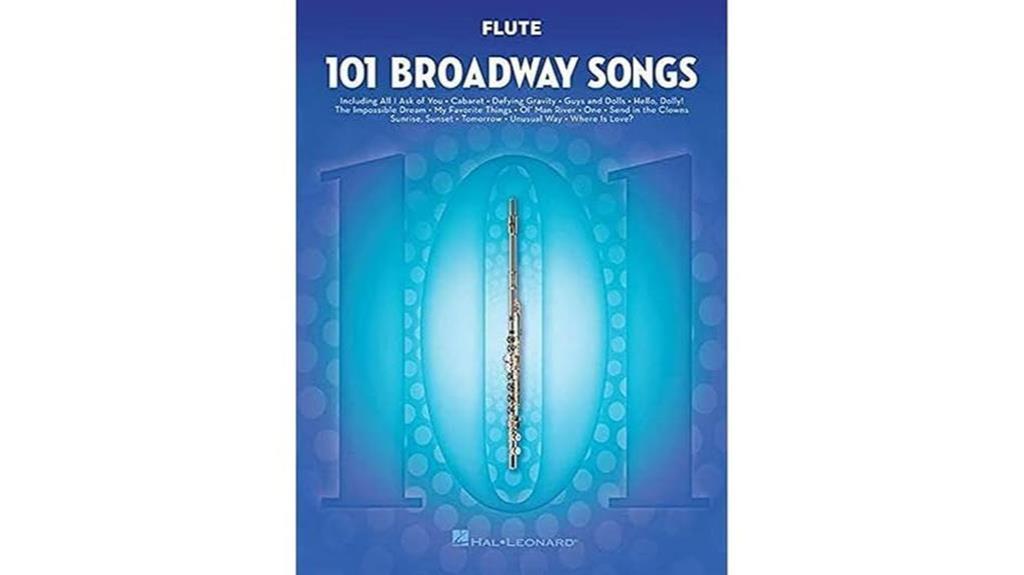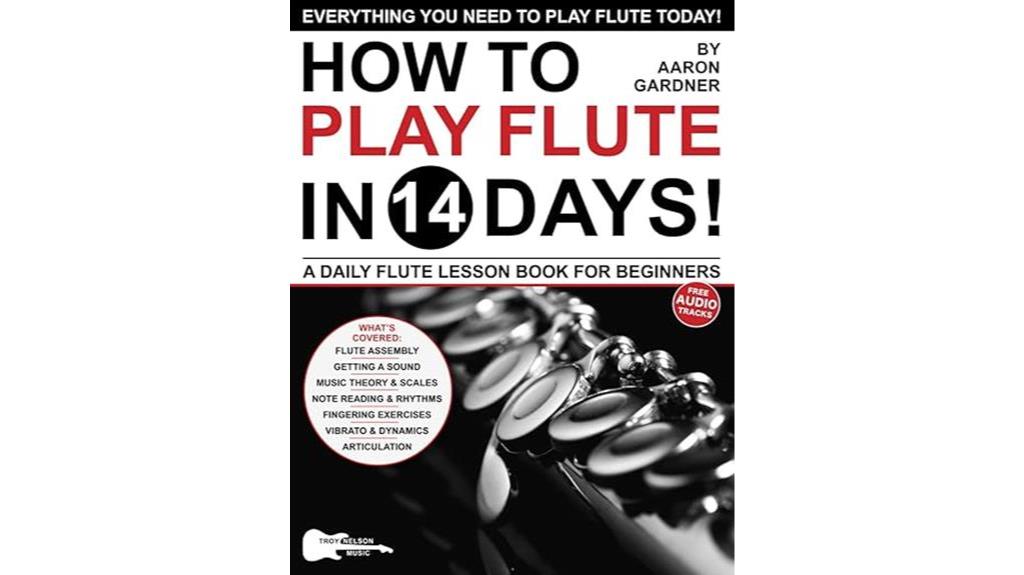The Rubank Elementary Method for flute has garnered praise from musicians at various skill levels for its thorough approach to developing fundamental techniques. With its focus on tone production and articulation, this method has proven to be a valuable resource for those looking to refine their playing abilities. Users have highlighted the method's effectiveness in providing structured guidance and fostering gradual improvement. As we explore the pros, personal experiences, recommendations, and feedback surrounding the Rubank Elementary Method, a deeper understanding of its impact on flute players emerges.
Key Takeaways
- Structured approach with practical exercises for beginners and intermediates.
- Progression through scales aids skill development effectively.
- Prepares learners with solo pieces for advanced repertoire.
- Clear instructions enhance learning experience.
- Additional resources may complement method for comprehensive learning.
Pros of Rubank Elementary Method
The Rubank Elementary Method stands out as a thorough and highly recommended resource for beginner and intermediate flute players. It offers an all-encompassing approach to music instruction and practical exercises geared towards fostering skill development on the instrument.
Its technique benefits are evident through structured lessons that focus on building a strong foundation in essential flute skills such as tone production, articulation, and finger dexterity. The instruction effectiveness is notable as it guides students through progressive levels of difficulty, ensuring a steady advancement in musical proficiency.
With a clear emphasis on fundamental techniques and musical understanding, the Rubank Elementary Method serves as a valuable tool for aspiring flute players looking to enhance their playing abilities systematically.
Personal Experiences With Rubank Method
Incorporating the Rubank Elementary Method into one's flute learning journey has provided enriching and enlightening personal experiences for many musicians. The method has proven to be instrumental in facilitating learning progress and overcoming instrument challenges.
Many users have reported significant improvements in their flute playing skills after using the Rubank Elementary Method.
Some beginners found the method helpful in tackling the challenges of producing correct notes and developing a strong foundation in flute playing.
Several musicians have expressed satisfaction with the practical exercises offered in the Rubank book, which have contributed to their overall progress with the instrument.
Recommendations for Rubank Method
Utilizing the Rubank Elementary Method as a foundational tool in flute instruction has consistently yielded commendable results, fostering skill development and musical proficiency among beginner and intermediate players.
To optimize the benefits of this method, incorporating regular practice sessions is essential. Consistency in practicing the exercises and pieces outlined in the Rubank book is key to gradual improvement and mastery of flute techniques. By dedicating time each day to work through the lessons and scales provided, students can enhance their playing abilities and build a strong musical foundation.
Additionally, following the practice tips suggested within the Rubank Elementary Method can further aid in refining flute skills and achieving musical growth. Consistent practice, guided by the Rubank method, is a proven pathway to success in flute playing.
Multilingual Feedback on Rubank Method
To gain a thorough understanding of the effectiveness and reception of the Rubank Elementary Method, examining the multilingual feedback provided offers valuable insights into the book's global impact and utility among diverse flute learners.
- Language diversity: Feedback in various languages such as Spanish and Italian showcases the international reach and appeal of the Rubank Method, highlighting its cultural impact.
- Cultural impact: The multilingual feedback reflects how the method transcends linguistic barriers, making music education accessible to a wider audience worldwide.
- Global reception: Positive reviews in different languages indicate the method's effectiveness in teaching flute across various cultural backgrounds, emphasizing its versatility and adaptability.
General Feedback on Rubank Elementary Method
Examined through a lens of extensive user experiences and insights, the overall feedback on the Rubank Elementary Method underscores its effectiveness and value in facilitating flute learning for a diverse range of musicians. Users appreciate the method book for its structured approach, practical exercises, and clear instructions suitable for both beginners and intermediate players.
Many find the progression through scales and lessons to be instrumental in improving their flute skills. The inclusion of solo pieces also prepares learners for more advanced repertoire. While the book stands strong on its own, some users recommend exploring additional resources to supplement learning.
Frequently Asked Questions
Is the Rubank Elementary Method Suitable for Advanced Flute Players?
Advanced flute players might find the Rubank Elementary Method less suitable due to its focus on progressive learning for intermediate players. While the book provides a solid foundation and clear instructions, it may lack the advanced techniques and nuances that experienced musicians seek.
Advanced players might benefit more from materials tailored to their skill level, offering greater challenges and opportunities for growth in their musical proficiency.
Can the Rubank Elementary Method Be Used for Self-Study?
Self-study with the Rubank Elementary Method is a viable option for motivated learners seeking guided progress. The structured practice techniques and clear progression tracking in the book provide a roadmap for individual growth.
While group learning offers unique benefits, the method's thorough approach, when coupled with personal dedication, can lead to significant skill development. By following the method diligently, self-learners can effectively advance their flute playing abilities, establishing a strong foundation for musical growth.
Are There Any Online Resources That Complement the Rubank Book?
Online tutorials and practice apps can greatly complement the Rubank method book, offering interactive and visual aids to enhance learning. Utilizing resources like video tutorials for technique demonstrations and practice apps for tracking progress can provide additional support and guidance for self-study learners.
These tools not only reinforce the concepts taught in the book but also offer a dynamic and engaging way to practice and improve flute playing skills.
Does the Rubank Elementary Method Cover Specific Music Genres/Styles?
The Rubank Elementary Method offers a thorough approach to flute instruction. It covers a wide range of foundational techniques essential for any aspiring flutist. While the focus is primarily on classical music styles, the method also incorporates elements that can be adapted for jazz flute techniques.
Is the Rubank Elementary Method Available in Digital Formats for Easy Access?
Digital resources have become increasingly popular for music education, providing enhanced accessibility and convenience for learners.
The availability of the Rubank Elementary Method in digital formats can greatly benefit students by offering easy access to lessons and practice materials anytime, anywhere.
Conclusion
In the world of flute playing, the Rubank Elementary Method shines as a guiding light for beginners and intermediate players alike. With its structured approach and thorough instruction, this method serves as a solid foundation for developing essential flute techniques.
Like a well-tended garden that blossoms with diligent care, the Rubank method nurtures musical growth and proficiency with each dedicated practice session.
Embrace the Rubank method, and watch your musical abilities flourish.





